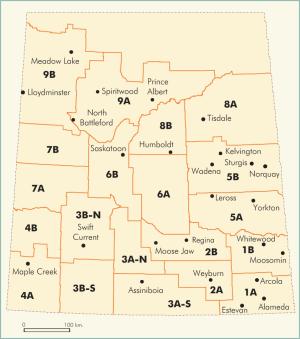
Cattle for milking, meat and locomotion accompanied the earliest European settlers, and from that basis developed one of the major economic drivers of the Saskatchewan rural economy. Herds were present in the Red River Valley by 1824, and by 1864 had spread into the North-West Territories as far as Fort Edmonton. Canada was committed to settlement by homesteaders and opposed to an open-range policy. But in 1881 the Macdonald government reluctantly allowed for some very large leases across what would become southern Alberta and into southwestern Saskatchewan, stocked with longhorn cattle from the United States. Unlike the farmers who stored winter feed for their stock, the ranchers from the south expected the cattle to graze all winter. A series of devastating winters for cattle, the incursion of the Canadian Pacific Railway (which was given every other section of land along the right-of-way through ranching country), and the North-West Resistance (fought over Métis land claims) convinced the government to end the large ranch period after less than two decades.
Marketing of beef beyond the farm gate was initially for government contracts to supply the Natives, and for church missions and police outposts. Soon, however, a marketing centre was established in Winnipeg for shipment of live cattle to eastern Canada and the United States. This brought pressure for an improved quality of the animal: so first the Shorthorn, and then the Aberdeen Angus and Hereford breeds were introduced. The first system of marketing involved dealers and drovers who went from farm to farm, buying cattle on a per-head basis and then moving them by train to Winnipeg. In 1918 the farmers began building scales in local centres to make the pricing more transparent. Some of these centres, such as Prince Albert, Moose Jaw and Saskatoon soon became established as collection yards. All centres were federated in 1926. Eventually these centres built a slaughter facility in Saskatoon. Later these centres and slaughter facility became the Livestock Division of the Saskatchewan Wheat Pool, which was more recently purchased by the Nilsson Bros. Group of Companies.
As the Saskatchewan beef industry evolved from shipping live cattle to transporting swinging carcasses and then boxed beef (cuts), there was increasing interest in quality standards; grades were therefore created to reward excellence. To supply the bulls demanded by commercial cow/calf operators, the purebred organizations thrived and the exhibitions and bull sales grew in number and sophistication. The Western Canada Agribition held each fall in Regina is rated as one of the leading beef shows in the world. Grading shifted from assessing live animals to examining the dressed carcass, and finally to measuring the rib eye (a cross section between the eleventh and twelfth ribs). Selection pressure for highly muscled carcasses led to a dramatic reduction in carcass size, corrected by introducing programs of selection for growth rate and by the importation from continental Europe of several larger breeds for crossbreeding, such as the Charolais and Simmental.
In the 1950s the development of the feeding industry in the United States soon spread to Saskatchewan. This produced uniform, well-finished carcasses with efficiencies not available to small farm feeders. The Saskatchewan industry has been slow to develop, but is based on feeding barley, and to a lesser extent feed wheat. The increasing population of beef cattle in Saskatchewan is expected to generate an increased beef feeding industry. Logically, at some point there will be a new beef cattle processing plant built.
So long as there was a tariff structure for beef and beef cattle between Canada and the United States, the natural flow was from western Canada to Toronto and Montreal. Since the tariffs were all removed and a free border entrenched in NAFTA, the flow has been from Saskatchewan south. The movement can be either as feeder cattle, finished cattle for processing, or processed beef, depending upon price. A secondary market for feeder and finished cattle is to the processing plants and feedlots concentrated in southern Alberta. See Figure BI-1 (table and map) on page 97.
C.M. Williams